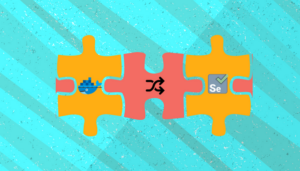Critical thinking is not about being skeptical or negative, it is about being intentional in how we think, question, and make sense of information.
It is a skill that helps us slow down, look closer, and make better judgments instead of reacting to the first thing we see or hear.
Here is what it really involves:
- Analysis: Breaking complex ideas or problems into smaller pieces to see how they connect and what is happening inside.
Evaluation: Look at the facts and ask – Is this reliable? Is this relevant? Do I have enough supporting documents to believe it? - Inference: Using what we know to come up with logical, balanced conclusions, not just guesses or assumptions.
- Self Correction: Being open to changing our minds when new information proves us wrong. That is how we grow.
In simple terms, critical thinking means we don’t just take information literally.
As testers, we pause, question, reflect, and then decide using logic, not based on bias.
Success comes from asking the right questions, not already knowing all the answers.
What Critical Thinking Really Means in Testing
Critical thinking is not about being skeptical or negative. It is about being curious, analytical, and intentional.
It means asking:
- Why does this feature behave this way?
- What could go wrong here?
- What happens if the user takes a different path?
It is moving from “Does it work?” to “Does it work for everyone, every time, and in every user scenario?”
When testers think critically, they don’t just test what is written in a requirement, they test what is possible in the real world.
Why is Critical Thinking Important?
The software world moves fast. New releases go out weekly, sometimes daily.
AI is helping to generate scripts, automation is handling regression, and pipelines are getting smarter.
But here is the hard truth, automation doesn’t think. It follows patterns. It executes.
Critical thinking is what bridges the gap between automation and assurance.
It helps testers decide:
- What should we automate?
- What should we not automate?
- What risks actually matter?
- What assumptions have we not yet discussed?
Automation can verify functionality, but critical thinking validates quality.
The Question That Changed the Test
Some of the most valuable bugs I have ever found didn’t come from test cases.
They came from a simple question: “What if?”
I still remember testing a voting application where everything seemed fine.
The first two options worked flawlessly. But when I tried the third option, something strange happened: it saved the vote twice. No errors. No crashes. Just a subtle flaw that completely changed the outcome.
That one moment reminded me: testing is not just about executing steps, it is about thinking critically.
Real World Scenarios Where Critical Thinking Made the Difference
- Spotting the Pattern Behind a Pass
You run the same test several times, all passes. But something feels off.
You slow down, check the logs, and realize the system is not validating edge inputs at all.
That instinct? That is critical thinking.
- Questioning the Obvious
Everyone assumes “it works” because it worked last time.
But you decide to test under poor network conditions and suddenly, the app starts timing out. - Connecting the Dots
You notice a minor UI lag and trace it to a double API call that could cause duplicate transactions. It is not just luck, it is observation backed by curiosity.
The Role of Critical Thinking in the Testing Community
Testing communities thrive on shared curiosity.
Every time a tester says, “I noticed this strange behavior, what do you think?”,
They are not just finding a bug, they are inviting others to think deeper.
Peer reviews, community discussions, and knowledge sharing sessions are where critical thinking grows.
When one tester asks a powerful question, dozens of others start seeing software differently.
That is the beauty of our community, it does not compete; it collaborates to sharpen minds.
How to Build and Practice Critical Thinking
Here are simple, practical ways testers can enhance this skill.
Critical thinking is not about being skeptical or negative; it is about being intentional in how we think, question, and make sense of information.
It is a skill that helps us slow down, look closer, and make better judgments instead of reacting to the first thing we see or hear.
Here are simple, practical ways testers can enhance this skill.
You have got to slow down before you sign off. Don’t just click “passed” the second the test runs green. Take a moment and ask yourself: “What does this test actually verify?” If something looks weird, even if it technically works, don’t let it go. Dig in. That is where the real bugs hide.
Get into the habit of asking the big question: “Why?” Why does the developer choose this solution? Why does the Product Owner want this feature in this flow? Your critical thinking grows when you understand the intent behind the product, not just its implementation.
Finally, treat failed tests like treasure. Don’t just rush to fix them and move on, stop and ask, “Why this test break now?” Use that failure as a lesson for the whole team. And please, stay curious! Talk to developers, product owners, and other testers. Every conversation, blog post, book, webinar, or meetup you join expands your testing brain.
The Skill That Never Expires
Tools evolve. Frameworks change. AI keeps advancing.
But one thing stays constant: the need for human validation.
Critical thinking is what makes testers more than just executors of scripts it makes them champions of quality.
So the next time you are testing, don’t just check if it works.
Ask yourself why it works, what could go wrong, and what story the data is telling.
That is where the real testing begins.Critical thinking is not just a tester’s skill.
It is our superpower, the one that keeps software human, reliable, and meaningful.










